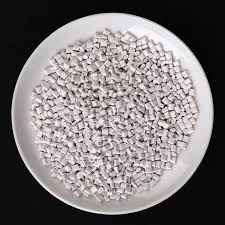The Multifaceted Role of Thiocyanate in Chemistry and Biology
Thiocyanate, an anion composed of sulfur and cyanide (SCN⁻), is a fascinating compound that has garnered significant attention in both chemical and biological contexts. Its unique properties and diverse applications make it a subject of interest for chemists, biologists, and medical researchers alike. This article delves into the formation, characteristics, and implications of thiocyanate in various fields.
Formation and Characteristics
Thiocyanate is typically formed through the reaction of cyanide salts with sulfur-containing compounds. It can also be produced during the metabolism of certain dietary sources, such as cruciferous vegetables like cabbage and broccoli, which contain glucosinolates. When these compounds break down, thiocyanate may be released.
In its ionic form, thiocyanate is a colorless, relatively stable compound that is soluble in water. Its unique structure allows it to form complexes with various metal ions, influencing its behavior in chemical reactions. Thiocyanate's ability to stabilize certain metal ions makes it valuable in analytical chemistry and industrial applications, including the removal of heavy metals from wastewater.
Biological Significance
Thiocyanate plays an essential role in the human body, primarily in relation to thyroid function. It is a competitive inhibitor of iodide uptake in the thyroid gland, which is crucial for the synthesis of thyroid hormones. In moderate concentrations, thiocyanate can help regulate thyroid hormone production; however, excessive levels may lead to hypothyroidism or other thyroid-related disorders. This dual role underscores the importance of maintaining proper thiocyanate levels within the body.
Furthermore, thiocyanate has been studied for its potential antimicrobial properties
. Research has shown that it can inhibit the growth of certain pathogens, including bacteria and fungi. This antimicrobial effect may be attributed to the compound's ability to disrupt cellular processes in microorganisms, making it a candidate for use in antimicrobial formulations where resistance to conventional treatments is a concern.thiocyan

Thiocyanate and Health
The health implications of thiocyanate are multifaceted and depend on its concentration in the body. While low levels of thiocyanate are not only non-toxic but may also be beneficial, prolonged exposure to high levels, particularly from dietary sources or environmental contamination, can lead to health issues. This dichotomy highlights the need for balanced consumption and monitoring of thiocyanate levels, especially for populations consuming large amounts of thiocyanate-rich foods.
Some studies have suggested a link between thiocyanate and cardiovascular health. It has been proposed that thiocyanate can regulate blood pressure by influencing nitric oxide production, a key factor in vascular health. While more research is needed in this area, the potential health benefits associated with thiocyanate present a compelling case for further investigation.
Environmental Considerations
Thiocyanate is not only significant in biological systems but also holds importance in environmental chemistry. As a result of industrial activities, thiocyanate can be found in various water sources, particularly from mining operations and agricultural runoff. Its persistence in the environment raises concerns about contamination and the potential risks to both human health and aquatic ecosystems.
Efforts to mitigate thiocyanate pollution include the development of bioremediation strategies that employ microorganisms capable of degrading thiocyanate into less harmful substances. Additionally, regulatory frameworks are being established to monitor and manage thiocyanate levels in the environment to protect both ecological and human health.
Conclusion
Thiocyanate is a remarkable compound that straddles the line between beneficial and harmful, depending on its concentration and context. Its formation, biological significance, and environmental impact position it as a compound of considerable interest in multiple scientific disciplines. Understanding the multifaceted roles of thiocyanate is crucial not only for advancing our knowledge in chemistry and biology but also for addressing public health and environmental concerns. As research continues to unfold, thiocyanate may reveal new insights that enhance our understanding of both the natural world and the complexities of human health.

